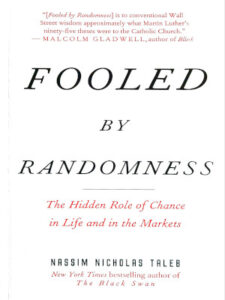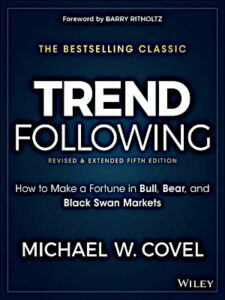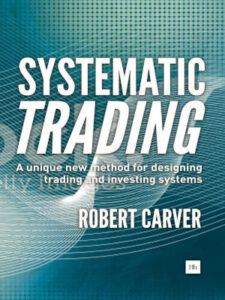We’ve compiled a list of the most important and valuable investing books, and give you their pros and cons- from our subjective perspective.
Are you looking to take control of your financial future? Investing is a powerful tool that can help you build wealth and achieve your financial goals. But where do you start? There’s a lot of information out there, and it can be overwhelming to choose where to begin. That’s where this guide comes in. Covering everything from the basics of personal finance and investment to advanced concepts and strategies. Whether you’re a beginner just starting to learn about investing or an experienced investor looking to expand your toolset, this article has something for everyone.
There is no get-rich-quick book on this list. By reading the books mentioned, you’ll gain a deeper understanding of how to make intelligent investment decisions, build a solid financial foundation, and achieve your long-term financial goals.
While our own journey of education continues, we might expand this article in the future if we stumble across new books we think are worth sharing. If you have personal favorites that need to be added to this list- please let us know in the comment section!
Chapter one: investing books about basics of personal finance and investment
The book in this chapter shows the importance of financial education, the difference between assets and liabilities, and the power of passive income. By reading it, you will also learn about the importance of creating multiple streams of income, as well as the benefits of investing in real estate and other alternative investments.
Robert Kiyosaki “Rich Dad, Poor Dad”
“Rich Dad, Poor Dad” is a book about making money and being financially successful. The author, Robert Kiyosaki, believes that the best way to get rich is to invest in things that make money for you, like real estate or your own business. The whole book revolves around investing in assets that give you a stream of income- instead of investing in liabilities that drain your budget.
He criticizes that schools and universities must prepare people to deal with money. He writes a lot about risk appetite- and the distinction between successful people who take (calculated) risks and those who take no risks but find excuses.
The book is written like a story, with the author sharing lessons he learned from two crucial men in his life: his rich friend’s father and his own father, who was not as financially successful.
Despite the relatively short book, it sometimes could have been more varied. However, it is worth reading for the perspective change that it offers. One of the lessons of this book is constant education to raise the number of tools in our tool chests- we can’t agree more with this notion.
The Pro’s of “Rich Dad, Poor Dad”
- Offers a change of perspective for readers
- “Getting good grades- get a good job” is not the path to financial freedom.
- How wealthy people look at money- let money work for you.
- Provides helpful insights into investments outside of traditional employment
- Motivates the reader to explore further
- Easy language filled with personal anecdotes
- Quick read, feasible in an afternoon if you are a fast reader
The Con´s of “Rich Dad, Poor Dad”:
- For advanced readers, the book is overly simplistic.
- in some parts written repetitive
- Lacks investing detail with a focus on motivational aspects
Chapter two: investing books about behavioral finance and investor psychology
The books in this chapter explore the psychological and behavioral factors that influence investment decisions. They delve into the cognitive biases that shape our perceptions and cause us to make decisions that may not be in our best interest. The books also discuss the impact of emotions, such as fear and greed, on investment decisions and how to manage them. Finally, they also explore the effects of social and cultural factors on investors’ behavior, such as herd mentality and the role of media and “experts.”
 Daniel Kahnemann “Thinking, Fast and Slow”
Daniel Kahnemann “Thinking, Fast and Slow”
“Thinking, Fast and Slow” is a book about thinking. Written by Daniel Kahneman, it explores the psychology of decision-making and judgment.
“Thinking, Fast and Slow” is essential for investors because it provides insight into the cognitive biases and heuristics that can lead to suboptimal decision-making in economic contexts. By understanding these biases and how they affect our thinking, investors can take steps to mitigate their influence and make more sound investment decisions.
More specifically, it introduces the concept of “System 1” and “System 2” thinking, where System 1 is the fast, intuitive, and emotional thinking that is automatic and unconscious, and System 2 is the slow, deliberate, and logical thinking that is more effortful and conscious.
Kahnemann also touches on human biases that result in a tendency to prefer avoiding losses to acquiring gains being blind to one’s blindness in certain areas.
While the language of the book is accessible and comprehendible, the concepts and models described here are not. I suggest active engagement with the text to understand the book’s recommendations and be aware of them in daily life.
Pros of “Thinking fast and Slow”:
- Knowing the two systems helps us understand how thinking can affect decisions, especially in investing.
- Describes mental biases and their impact
- Gives tips and techniques on avoiding those biases and thus making better decisions
- Investigates the science of decision-making
- Popular science book, language adapted for non-psychologists
Cons of “Thinking fast and slow”:
- It emphasizes theory more than practical use.
- Not strictly a finance/investing book
- Requires the reader to be actively engaged with the topic- may not be suitable for everyone
Nassim Taleb “Fooled by Randomness”
“Fooled by randomness” by Nassim Taleb introduces the concept of “Black Swan events,” which are rare, hard-to-predict, and high-impact events that disproportionately affect people’s lives and the markets.
The book argues that “success” is often wrongly attributed to skillful decision-making when it is the result of randomness or luck. It also discusses how people’s cognitive biases and heuristics can lead to a false sense of understanding and control in the face of uncertainty and randomness.
This book is a classic in the field of probability and uncertainty and an exciting read for anyone who wants to understand how randomness and uncertainty play a significant role in our lives and how we can better prepare ourselves for unpredictable events.
Being a successful investor, Taleb regularly touches on the impact of his concepts on the investing domain. However, readers looking for a recipe for investing will be disappointed. Like his other books, Taleb’s book also forces the reader to think instead of presenting a ready-to-eat solution.
Speaking of his other books, Fooled by Randomness is the first book in his “Incerto Collection”:
- Fooled by Randomness
- The Black Swan
- The Bed of Procrustes
- Antifragile
All revolve around black swan events, probability, and decision-making, shining light from different perspectives. All are very worth reading, be prepared for a considerable time investment!
Pros of “Fooled by Randomness”
- a unique perspective on the role of luck and randomness in the success of a business, investing, and life
- introduces the helpful framework of high-impact, low-probability “black swan events.”
- Encourages readers to question their assumptions and think more critically about their decisions.
- outlines a strategic approach that favors taking risks with huge upside potential while limiting the downside risks
Cons of Fooled by Randomness”
- Complex topic: the reader has to be actively engaged, not read for entertaining purposes
- There is no detailed explanation of his investing strategies- investors have to do their homework.
- Very long read, sometimes complicated language
- Anecdotes filled with stereotypes (MBAs, journalists)- not everybody’s cup of tea
Chapter three: investing books about concepts and strategies
This chapter contains by far the largest number of recommended books. Reading them teaches you about investment philosophies like value investing and Trend following. You will learn how professionals successfully traded in many different markets, how to analyze stocks fundamentally, and build automated trading systems.
By reading and learning about many different concepts and strategies, you will expand your own tool chest and be able to create a ruleset tailored to you.
Jack Schwager “Market Wizards”
Jack Schwager interviewed the world’s best traders and money managers for this book (the first in a series of books). The interviews include people like Bruce Kovner, Richard Dennis, Paul Tudor Jones, Michel Steinhardt, Ed Seykota, Marty Schwartz, Tom Baldwin, and more.
The interview partners give insight into their thought processes and mental preparation the successful traders established. While the responses cover a broad spectrum of trading strategies, The most educating part is seeing the different trading styles involved. Styles that even seem to contradict each other. What works best for one is ruled out and done the opposite way by the other.
The interviews themselves are easy to read, and each chapter is self-contained- you can read one at a time or all in one rush. Jack Schwager’s ability to distill a set of guiding principles makes this book (and its follow-up books) a must-read.
Pros of “Market Wizards”:
- Provides a broad spectrum of strategies used by some of the most successful traders,
- Interviews are beneficial for those who want to learn from experts,
- Clearly written and easy to understand,
- Includes multiple trading approaches and markets.
Cons of Market Wizards:
- Strategies not suitable for beginners
- Not all ideas are relevant to every market- not all markets are accessible to retail traders.
- Some strategies may have stopped working.
- Can become repetitive
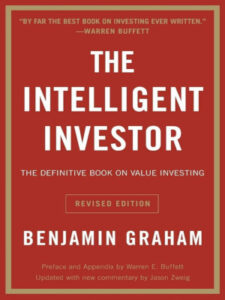
“By far the best book on investing ever written.” Warren Buffett’s praise on the jacket text.
“The Intelligent Investor” by Benjamin Graham is a book we think should be on every investor’s bookshelf. It is a comprehensive guide to value investing that is both accessible and timeless, providing valuable insights into the principles and strategies of successful investing.
The book provides a thorough overview of the key concepts and principles of value investing, including the importance of analyzing financial statements, understanding market trends, and managing risk. Graham also provides valuable insights into the psychology of investing and the importance of maintaining a long-term perspective. The book is written in a clear and concise style, making it accessible to both novice and experienced investors. The principles and strategies outlined in the book are timeless and applicable to any market condition. Overall, “The Intelligent Investor” is a classic book that we highly recommend to anyone looking to gain a deeper understanding of the principles of value investing and the mindset of a successful investor.
Pros of “The intelligent investor”
- Comprehensive guide to value investing.
- Clear and accessible (yet formal) writing style
- Offers insights into investor psychology
- Introduction to concepts such as financial analysis, market trends, and risk management
- timeless principles and strategies
Cons of “The intelligent investor”
- The focus is solely on stocks and value investing, with no other asset classes and/or strategies.
- Very heavy on theory and historical examples.
- Written with long-term investors in mind, not suitable for shorter time horizons.
- Large book, a long read.
Michael Covell “Trend Following- How to make a fortune in Bull, Bear and Black Swan Markets”
With this book, we leave the realm of pure investing, as Trend Following is a trading strategy. Trend following focuses on price action, following strict rulesets, and ignores media, fundamental numbers, and earning reports.
This book by Michael Covel is a comprehensive introduction to the principles and strategies of Trend following. He provides a detailed overview of the history, key concepts, and principles of Trend following. This includes understanding market cycles, managing risk, and maintaining a long-term perspective. He also provides valuable insights into the psychology of successful traders, drawing on the experiences of some of the most successful trend followers in history. Like Jack Schwager’s book, Covel portrays some of history’s most successful and prominent trend followers.
The book provides a wealth of practical advice and specific strategies for implementing Trend following in real-world investment scenarios, and it’s well-written, comprehensive, and packed with valuable insights and practical advice.
Pros of “Trend Following”
- Comprehensive guide to Trend following
- Provides practical advice and strategies
- Real-world examples and case studies
- Explanations of relevant technical indicators
- well-written and easy to follow
Cons of “Trend Following”
- The focus is on the methodology; readers looking for more in-depth implementation details will be disappointed.
- Very long read, and fewer anecdotes might have compressed the content.
- Presents Trend Following as THE holy grail- leaves little room for other methodologies (especially Buy& Hold seems to be Michael Covel’s favorite punching bag)
Robert Carver “Systematic Trading”
“Systematic Trading” by Robert Carver is a comprehensive guide for traders and investors looking to implement systematic trading strategies. The book covers the basics of systematic trading and advanced concepts such as volatility targeting, position sizing, and risk management. The book also includes examples and case studies to illustrate key concepts and covers pitfalls such as over-complicating strategies, being too optimistic, taking excessive risks, and trading too frequently. It is intended for everyone who wishes to systematize their financial decision-making, either entirely or to some degree, and provides a unique new approach to system development.
Throughout this book, Robert Carver develops a holistic framework to implement strategies fitting for Semi-automatic traders, asset-allocating investors, and staunch system traders.
Our edition (hardcover from 2015) contains a quote from Daniel Kahneman’s “thinking, fast and slow” on the very first page- we finally come full circle.
Pros of “Systematic Trading”
- suitable for investors and traders
- a holistic framework for systematic trading, including advanced concepts
- The author has practical experience as an institutional trader- condenses those experiences into tips.
- Robert Carver maintains an open source python implementation of his framework- search for “pysystemtrade.”
Cons of “Systematic Trading”
- not suitable for complete beginners in systematic trading
- Written in plain language, the absence of formulas makes some things unnecessarily complicated to read.
- most readers will not fully understand at the first read (at least we didn’t)
- More emphasis on how to implement those ideas would be helpful (it is hard to understand the code mentioned above even after having read the book)
This is it- for now. Do you have additional favourites? What do you think about our selection? Let us know!
If you have additional questions or feedback, please leave a comment or drop a mail to feedback@6xfreedom.com



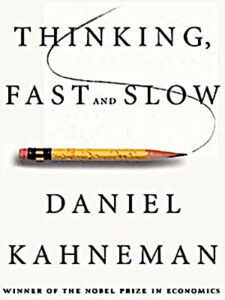 Daniel Kahnemann “Thinking, Fast and Slow”
Daniel Kahnemann “Thinking, Fast and Slow”